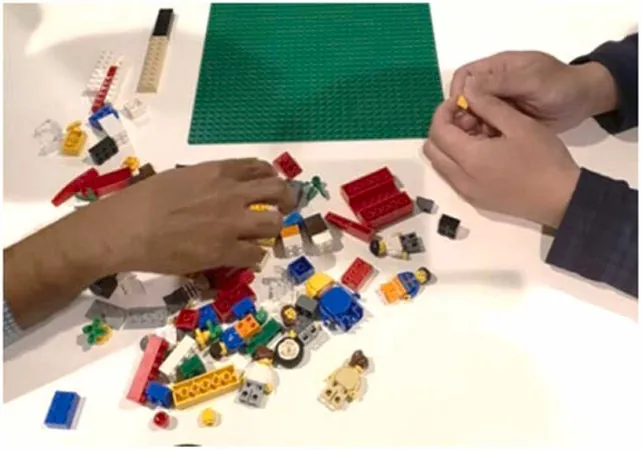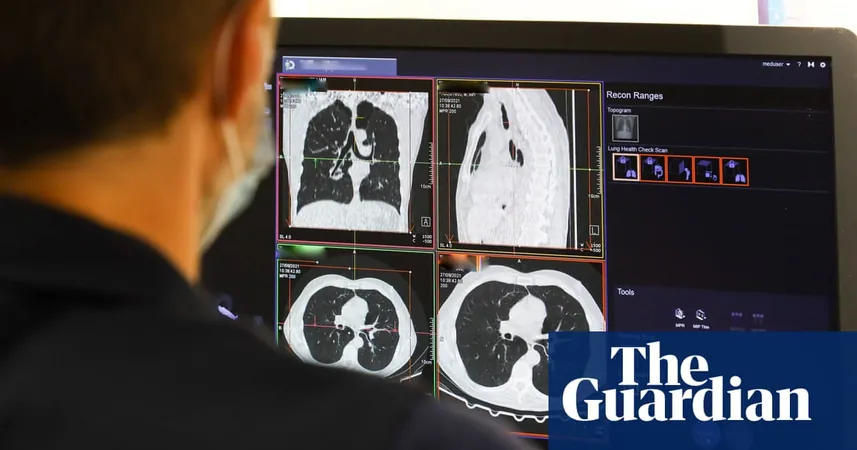
Brick by Colorful Brick: How LEGO is Transforming Collaboration Between Midwifery and Medical Students
2024-11-10
Author: Mei
You might think of LEGO as just a childhood toy, but recent research is revealing its unexpected role in bridging the gap between midwifery and medical students, with groundbreaking potential for healthcare education!
In an innovative study led by Liz McNeill of Flinders University and Dr. Lyn Gum from the University of South Australia, LEGO bricks emerged as an effective icebreaker that not only fostered camaraderie among students but also prepared them for future collaborative professional scenarios. Imagine a learning environment where the intimidation of future clinical practice is alleviated through the creative power of tiny colored blocks!
McNeill, an experienced midwifery educator, shared, “A small box of LEGO pieces on my desk has always served as a comforting resource for students when they needed to debrief and express vulnerability without the pressure of maintaining eye contact.” This insight led to the integration of LEGO SERIOUSPLAY—a dynamic methodology developed in the 1990s for enhancing communication and problem-solving—into a series of workshops between midwifery and medical students.
From 2018 to 2020, students engaged in collaborative efforts to build a birthing room with LEGO pieces during workshops spaced throughout their educational curriculum. This hands-on activity not only sparked lively discussions but also opened doors for students to recognize and value diverse perspectives on birthing care—an essential component in fostering future teamwork and mutual respect in high-pressure environments like hospitals.
To measure the impact of these workshops, pre- and post-session surveys were conducted, revealing a significant shift in student attitudes. Initially skeptical about using toys for serious learning, students later provided overwhelmingly positive feedback, highlighting how the activity enabled them to share experiences and insights from their respective fields. “We noticed students forming connections during breaks, discussing their unique professional experiences and contexts,” remarked Dr. Gum, who now serves as a Senior Lecturer in Nursing at UniSA.
The integration of LEGO helped dismantle initial barriers between the disciplines, paving the way for open dialogue and a deeper understanding of each other’s roles. “Students reported feeling more comfortable interacting with their medical counterparts post-workshop, indicating that our exercise had lasting benefits,” added McNeill.
This research underscores the value of interprofessional socialization in medical education, particularly in fields where teamwork and communication can dramatically impact patient outcomes. As McNeill eloquently summarized, 'What better place to start breaking down the barriers between professions than with our future healthcare providers?'
With the successful outcomes of these workshops, the authors advocate for incorporating similar hands-on, interactive strategies within educational settings across various disciplines. The implications of this study extend well beyond midwifery and medical programs; they provide a template that can be applied in countless professional environments where collaboration is key.
In conclusion, LEGO isn’t just a building toy; it's becoming a powerful tool for reshaping the future of healthcare training. Who knew that a few colorful bricks could lead to monumental changes in the way future doctors and midwives interact? Don't miss your chance to witness how educational innovation can pave the way for improved patient care.




 Brasil (PT)
Brasil (PT)
 Canada (EN)
Canada (EN)
 Chile (ES)
Chile (ES)
 España (ES)
España (ES)
 France (FR)
France (FR)
 Hong Kong (EN)
Hong Kong (EN)
 Italia (IT)
Italia (IT)
 日本 (JA)
日本 (JA)
 Magyarország (HU)
Magyarország (HU)
 Norge (NO)
Norge (NO)
 Polska (PL)
Polska (PL)
 Schweiz (DE)
Schweiz (DE)
 Singapore (EN)
Singapore (EN)
 Sverige (SV)
Sverige (SV)
 Suomi (FI)
Suomi (FI)
 Türkiye (TR)
Türkiye (TR)